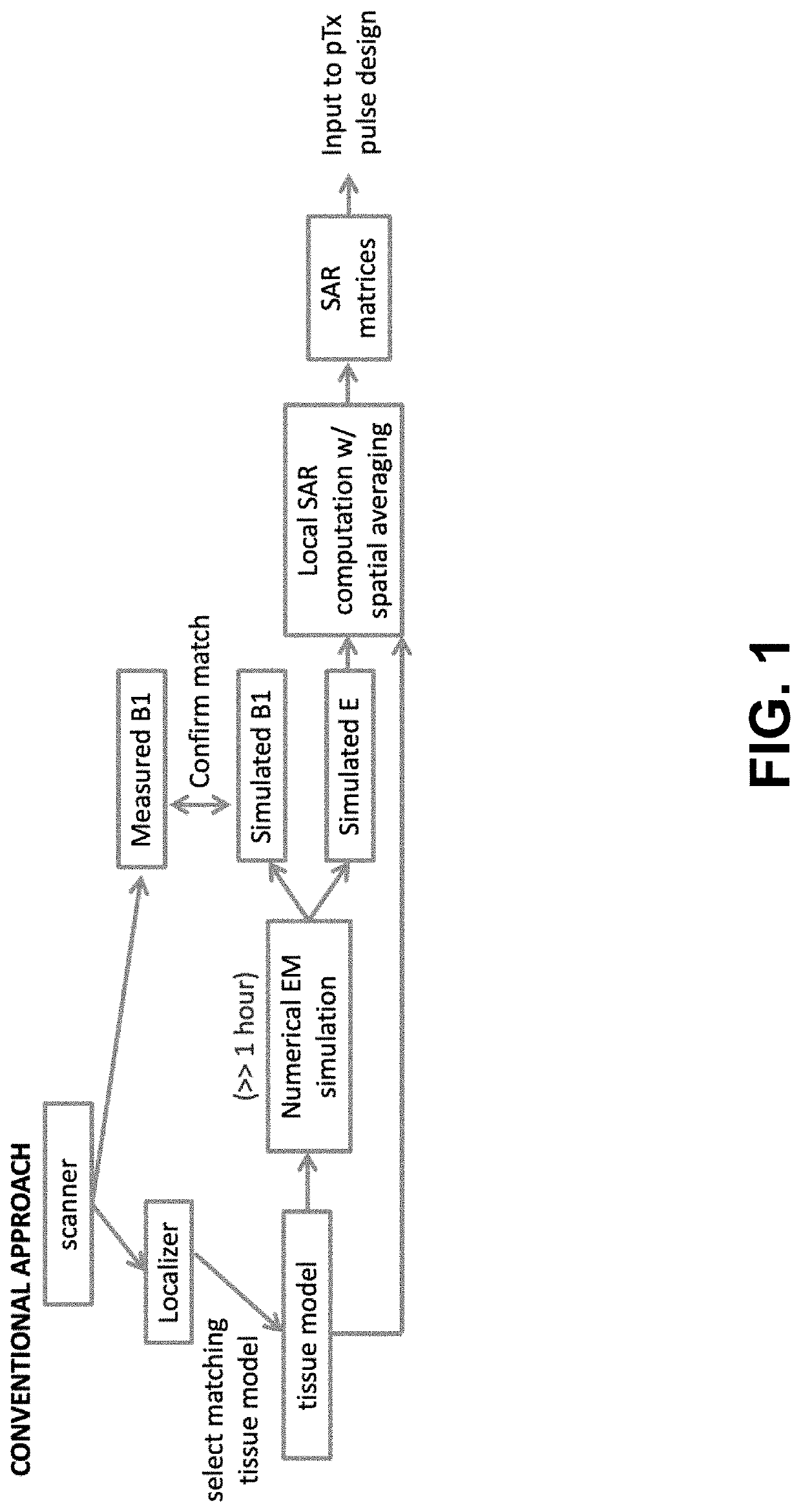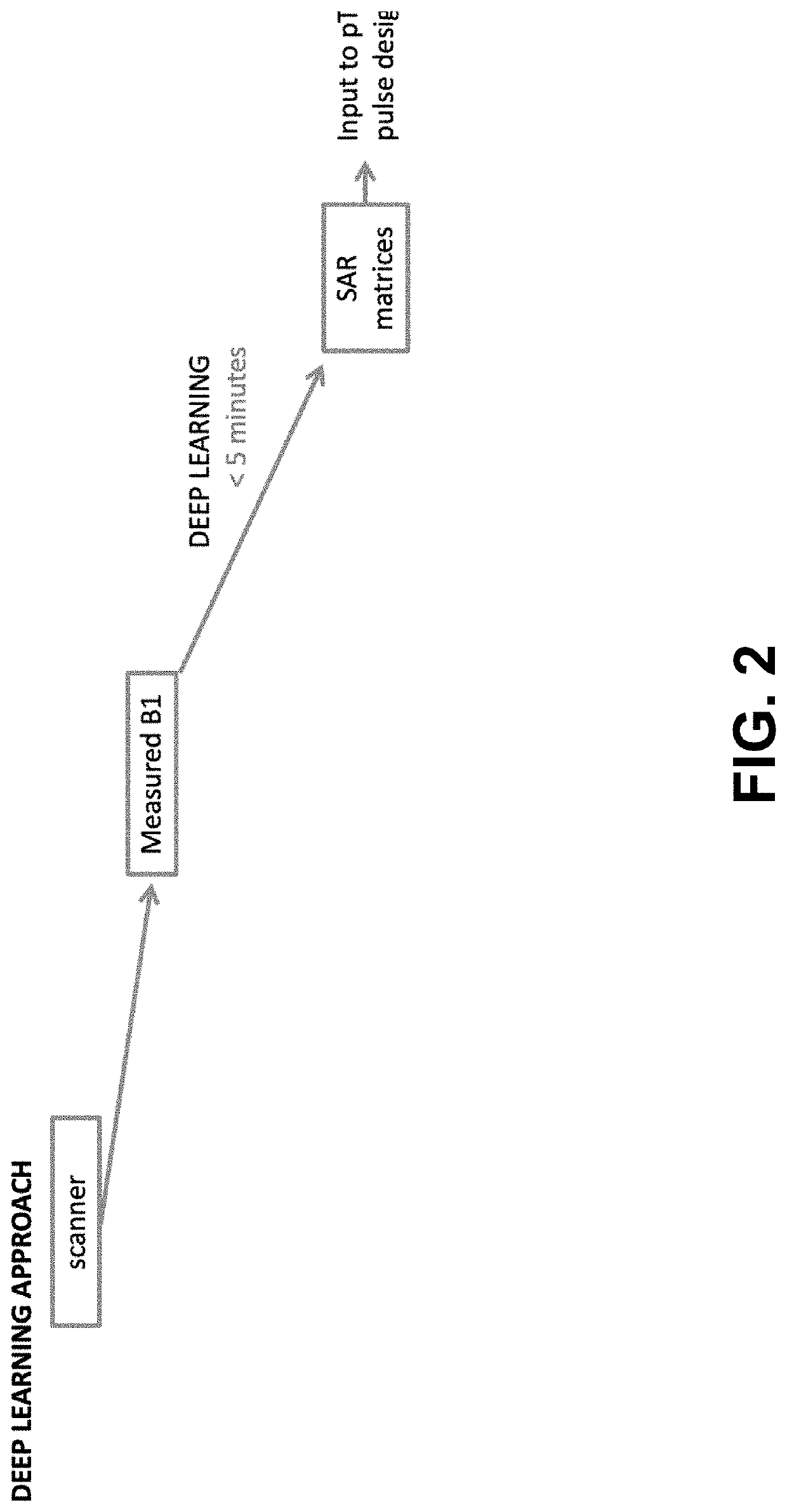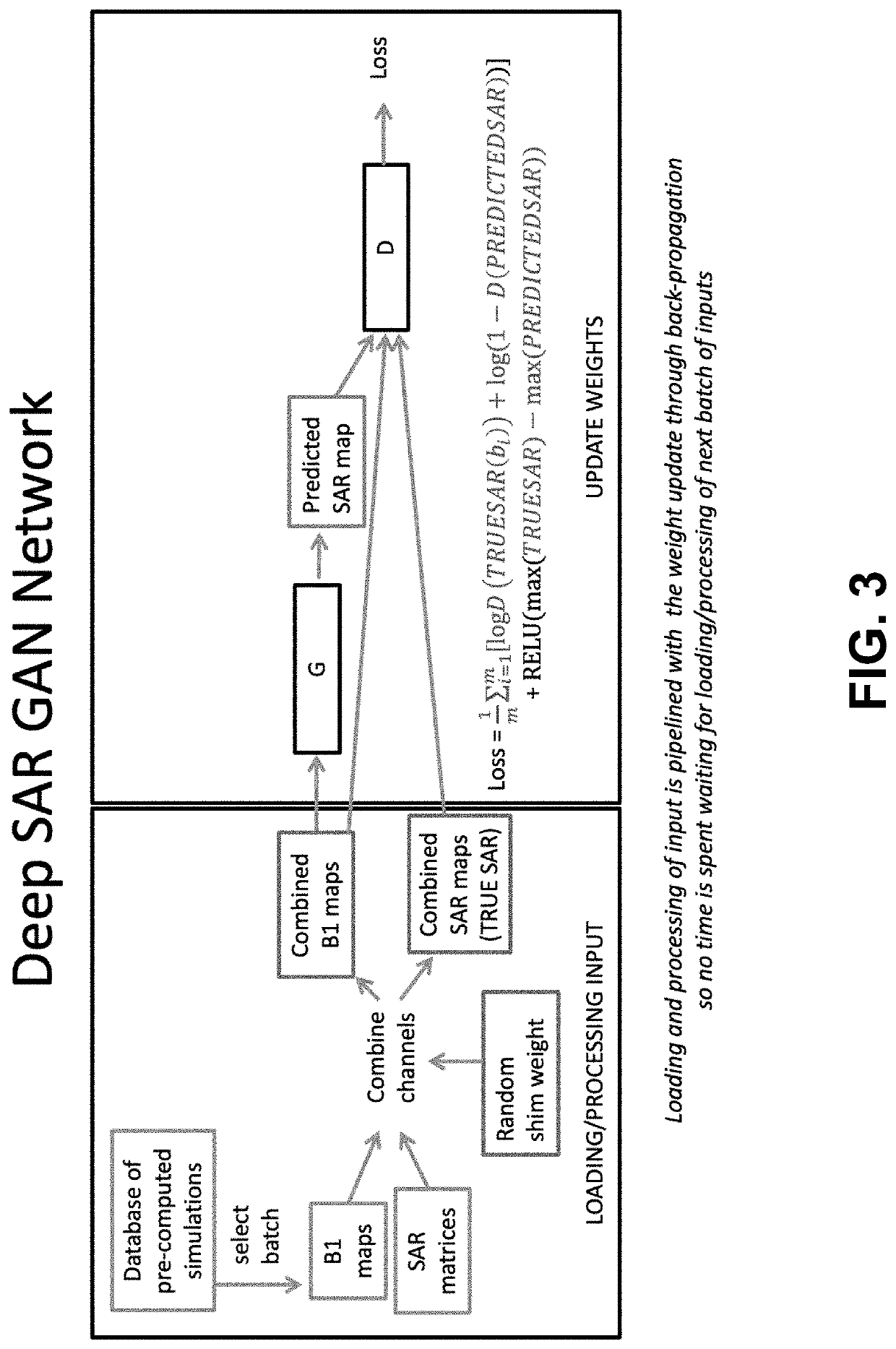DeepSAR: Specific Absorption Rate (SAR) prediction and management with a neural network approach
a neural network and specific absorption rate technology, applied in the field of specific absorption rate prediction in can solve the problems of difficult to achieve a robust method of managing local specific absorption rate (sar) in high field magnetic resonance imaging (mri), image inhomogeneity and heating risk for patients, and more difficult to address heating risk (quantified by sar)
- Summary
- Abstract
- Description
- Claims
- Application Information
AI Technical Summary
Benefits of technology
Problems solved by technology
Method used
Image
Examples
Embodiment Construction
[0021]Ultra-high field (UHF) magnetic resonance imaging (MRI) can result in improved image quality due to increased polarization of nuclear spins which leads to a higher signal to noise ratio compared to conventional methods. However, the electromagnetic wavelength is inversely proportional to the field strength and at UHF, wavelength effects cause complex interactions between the load and the electric and magnetic fields. For different patients, the spatial variations in the fields will be different which requires that the radio frequency (RF) pulse used to excite the magnetic spins be tailored for each specific patient to homogenize the fields. Both the magnetic (B1+) and electric (E) fields are relevant for an MRI scan. Inhomogeneity in the B1+ field leads to image artifacts like shading and central brightening that can negatively impact the interpretability of the image. Inhomogeneity in the E fields can interact with conductive tissue to produce localized heating which constitu...
PUM
 Login to View More
Login to View More Abstract
Description
Claims
Application Information
 Login to View More
Login to View More - R&D
- Intellectual Property
- Life Sciences
- Materials
- Tech Scout
- Unparalleled Data Quality
- Higher Quality Content
- 60% Fewer Hallucinations
Browse by: Latest US Patents, China's latest patents, Technical Efficacy Thesaurus, Application Domain, Technology Topic, Popular Technical Reports.
© 2025 PatSnap. All rights reserved.Legal|Privacy policy|Modern Slavery Act Transparency Statement|Sitemap|About US| Contact US: help@patsnap.com



